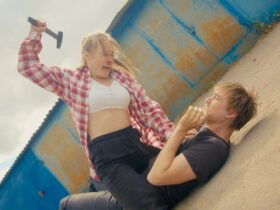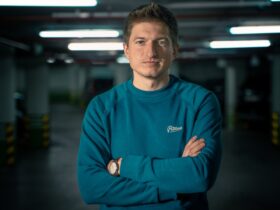Paige Hurd is an animator that grew up in Saint Augustine Florida and currently lives in Portland, Oregon. She graduated from Savannah College of Art and Design with a BFA in animation, where she directed her focus towards stop motion animation. She has worked on several student films as a stop motion animator and fabricator.
- Was there a particular event or time that you recognized that animation is your way of telling stories?
I believe it was in high school that I first realized animation was how I wanted to tell stories. I did a lot of landscape painting in high school and one day I decided I wanted to try out an animation project. When I created that project I think that was when I realized. There was something so magical about seeing these characters that I drew or moved in front of a camera suddenly come to life.
- What exactly is the job of an animation director?
I believe an animation directors job is to oversee every shot individually and make sure what needs to come across in the shot does. You need to take into account continuity from the previous shots, the acting, stage direction and overall appeal
- How many people are involved in creating an animation like yours? And could you tell us a bit about their roles, the flow of the team?
There was about 19 people that worked or helped out on the film. We had a main crew of about 5 people and then recruited others to help us out. Everyone pitched in and helped out in the fabrication phase of the production, building sets, puppets and props. Then as the production rolled on and we started getting ready to animate. We would put the set together, set dress, frame up the characters in front of the camera and then finally the shot would be ready to animate.
- What was the most important lesson you had to learn that has had a positive effect on your animation? How did that lesson happen?
I think the most important lesson I learned from this is that if you put in all of the effort you have and give it your all you will not have any regrets. I sometimes think about how I could have changed things for the better, but when I think about those moments in the middle of production I gave everything I could at the time. So I can’t regret or be upset at the outcome.
- What is the process in creating an animated character?
First part of making an animated character is figuring out who they are. What their likes/dislikes are and how they would react in different situations. Once you understand your character then you can move onto designing them. For stop motion you need to make a physical character that can move and be placed in front of a camera. The first thing you do is sculpt the character out, then you can create a mold from the sculpt and create an armature that will be able to move and withstand someone animating it. The characters can be casted in either silicone or foam, and once that is done the character can be dressed and costumed.
- 2D Animation vs. 3D animation what are your thoughts on this endless battle?
Well, because I do stop motion I guess I have a totally different view on the 2D animation vs. 3D animation debate. I personally believe all forms of animation are valuable and artistic. They each have their own set of difficulties too. I don’t think anyone of them is above the other. Sure I think it would be great to see more 2D and stop motion films made into features but 3D is an impressive and incredible form of animation too, and it seems like the public really loves 3D animation right now. I believe as long as there are people who love 2D and stop motion animation, it will never die.
- What does your animation workflow look like while animating? Tell us a little about the tools that you are using. What are your preferences? Methods? Plugins? Techniques?
I guess my workflow starts with acting the scene out in person, trying to understand how the character acts and moves. Then I film myself and record some reference. I start with a blocking pass to understand how the character moves in the space in front of the camera, then I normally try for a first pass then get notes and critique from others. I take all the notes I received and go ahead and do a final pass.
- What do audiences want? And is it the animator’s role to worry about that?
I don’t think it’s the animator’s role to worry about that. I think they need to worry about making the shot or scene read clearly and follow the directors vision.
- What role have film festivals played in your life so far? Why are they necessary? How do you get the most out of them?
I think film festivals are important because they support all kinds of film makers and artists. It’s a place where all different forms of film making can be shared and enjoyed. I rarely leave a film festival without it changing my perspective of life in some way, and its great to be around so many people who enjoy and want to experience new art.
- What is the most difficult part for you about being in the animation business, and how do you handle it?
I think it is holding onto why you love what you do. Things can get hard, you get tired, frustrated and sometimes burnt out. But even when you are at your lowest you need to still hold onto the reason why you love what you do and never let that go.

























